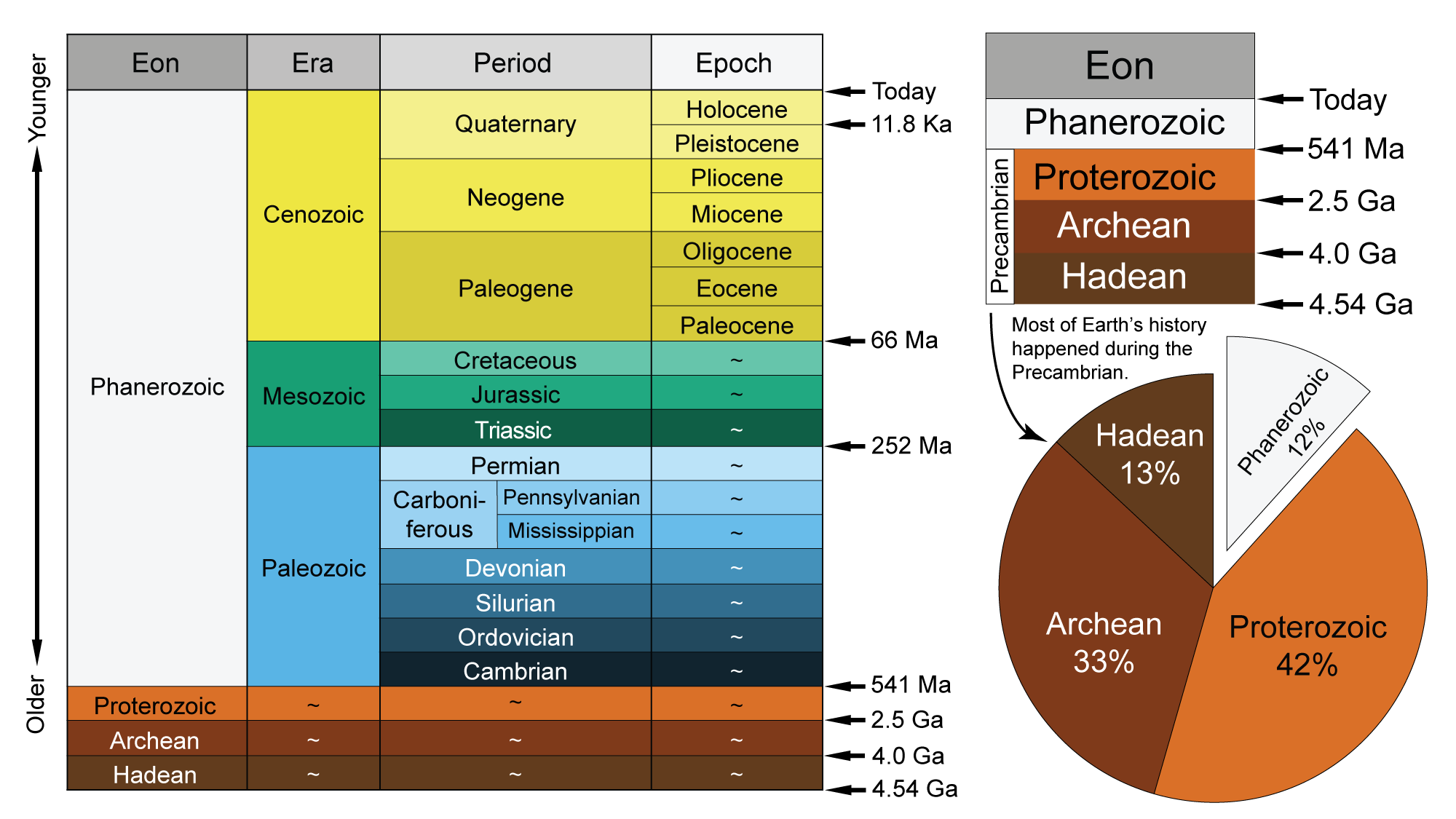The Geological Time Scale is a system used by scientists to organize Earth’s history based on the rock record. It divides Earth’s vast timeline into eons, eras, periods, epochs, and ages, each representing significant geological or biological events.

Key Divisions:
- Eons: The largest divisions of geological time. Earth’s history is divided into four eons:
- Hadean Eon: The earliest eon, characterized by the formation of the Earth and its early evolution.
- Archean Eon: The eon during which life first appeared on Earth.
- Proterozoic Eon: A long eon marked by the rise of single-celled organisms and the gradual oxygenation of the atmosphere.
- Phanerozoic Eon: The most recent eon, encompassing the evolution of complex life forms and major geological events.
- Eras: Eons are further divided into eras, representing major shifts in the types of life that dominated Earth. The Phanerozoic Eon is divided into three eras:
- Paleozoic Era: The “Age of Invertebrates,” characterized by the rise and diversification of marine invertebrates.
- Mesozoic Era: The “Age of Reptiles,” known for the dominance of dinosaurs and the breakup of the supercontinent Pangaea.
- Cenozoic Era: The “Age of Mammals,” marked by the rise of mammals and the evolution of humans.
- Periods: Eras are subdivided into periods, which are defined by specific geological or paleontological events. For example, the Mesozoic Era includes the Triassic, Jurassic, and Cretaceous periods.
- Epochs: Periods are further divided into epochs, representing smaller subdivisions within a period. For instance, the Quaternary Period is divided into the Pleistocene and Holocene epochs.
- Ages: The smallest units of the Geological Time Scale, ages represent even finer divisions within epochs.
Significance of the Geological Time Scale:
- Understanding Earth’s History: The Geological Time Scale provides a framework for understanding the major events and processes that have shaped our planet over billions of years.
- Dating Rocks and Fossils: It allows scientists to determine the relative and absolute ages of rocks and fossils, providing insights into the timing of past events.
- Studying Evolution: The Geological Time Scale is crucial for understanding the evolution of life on Earth, as it correlates major evolutionary events with specific time periods.
- Resource Exploration: It aids in the exploration and understanding of natural resources, such as oil, gas, and minerals, which are often associated with specific geological time periods.
The Geological Time Scale is a dynamic and evolving system, with new discoveries and research constantly refining our understanding of Earth’s history. It serves as a fundamental tool for geologists, paleontologists, and other Earth scientists in their quest to unravel the mysteries of our planet’s past.